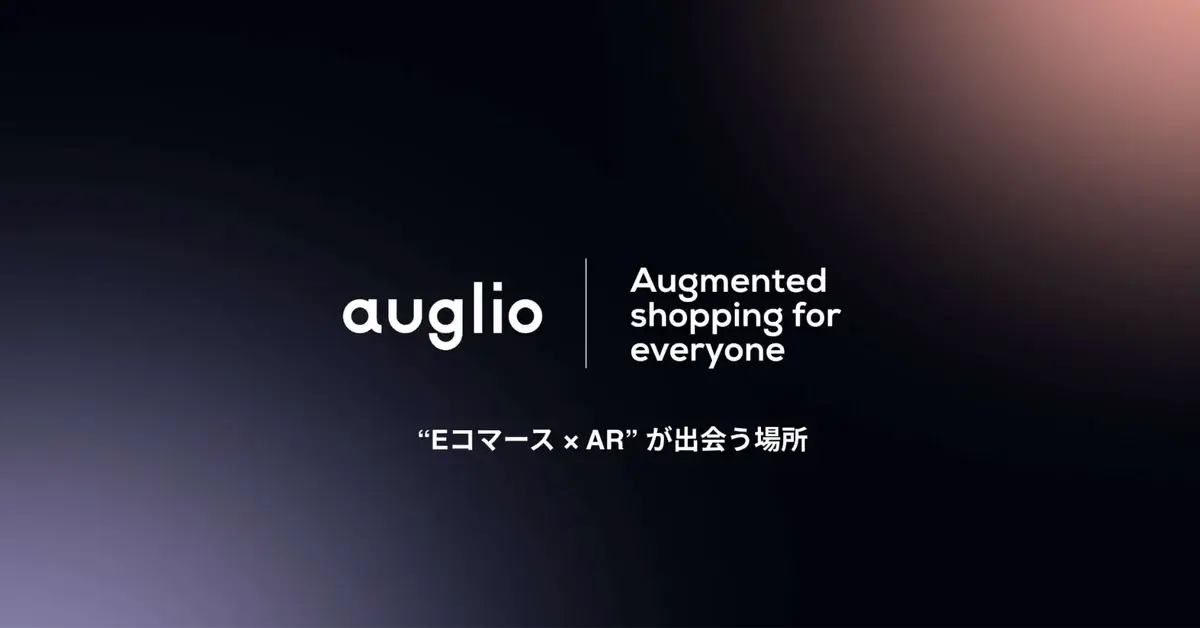In the age of personalization and inclusivity, digital accessibility is no longer a luxury—it is a legal, ethical, and commercial necessity. As e-commerce becomes increasingly immersive with technologies like Augmented Reality (AR) and Virtual Try-On (VTO), brands must ensure that innovation does not come at the expense of inclusivity. Auglio’s Virtual Try-On Plugin is designed to help eyewear, cosmetics, and fashion retailers provide engaging shopping experiences. But just as important as its ability to drive conversions is its alignment with evolving global accessibility standards.
This article explores how Auglio’s plugin is not only fully compatible with the European Accessibility Act (EAA) but also aligns with key accessibility requirements under US laws, such as the Americans with Disabilities Act (ADA) and Section 508 of the Rehabilitation Act. We’ll outline the principles behind these regulations, what they mean for e-commerce businesses, and how Auglio empowers brands to build accessible virtual shopping environments without compromise.
The European Accessibility Act (EAA)
The EAA is a landmark piece of legislation designed to harmonize accessibility requirements across the EU. Coming into effect for most B2C digital services on June 28, 2025, it mandates that businesses ensure their products and services are accessible to people with disabilities. This includes websites, mobile apps, self-service kiosks, e-commerce platforms, and other ICT-based services.
The EAA draws from international standards like EN 301 549 and Web Content Accessibility Guidelines (WCAG) 2.1 Level AA, focusing on four core principles: perceivability, operability, understandability, and robustness.
For virtual try-on solutions, compliance means that:
-
Visual interfaces must be navigable using keyboards and screen readers.
-
AR overlays and visual feedback should be accompanied by text alternatives.
-
Interactions must not rely solely on vision or pointer-based gestures.
-
Information and navigation structures must be logically coded and programmatically accessible.
United States Accessibility Requirements
In the United States, accessibility compliance is governed by a patchwork of federal and state laws. The most relevant for e-commerce are:
-
The Americans with Disabilities Act (ADA) – particularly Title III, which prohibits discrimination by public-facing businesses, including websites and digital services.
-
Section 508 of the Rehabilitation Act – which applies to federal agencies and contractors but is widely adopted as a standard in many industries.
-
State-level laws, such as California’s Unruh Civil Rights Act or New York’s accessibility regulations.
While the ADA does not explicitly define website accessibility requirements, court rulings and Department of Justice (DOJ) guidance suggest that businesses follow WCAG 2.1 Level AA as the de facto standard.
Together, these laws require businesses to provide equal access to digital content, features, and functions for individuals with visual, auditory, cognitive, and motor disabilities.
Auglio’s Accessibility Philosophy
Auglio was built on a foundational belief: advanced technology should empower every user equally. Accessibility was not an afterthought—it was baked into the architecture of its Virtual Try-On Plugin from the beginning. The system is designed to be:
-
Lightweight and fast-loading to support assistive technologies.
-
Responsive and usable across devices, platforms, and screen sizes.
-
Semantic in markup, supporting keyboard navigation, ARIA roles, and screen reader compatibility.
-
Customizable, allowing developers to adjust overlays, buttons, and captions to meet WCAG and platform-specific needs.
But what does this look like in practice?
Let’s explore the specific ways in which Auglio aligns with both European and American accessibility mandates.
Perceivability and Assistive Technology Compatibility
One of the cornerstones of accessibility is ensuring that content and interface elements can be perceived by users with varying abilities. For those with visual impairments, screen readers and screen magnifiers are essential tools. For those with cognitive differences, clarity and simplicity of layout can make or break the user experience.
Auglio’s interface supports this in several key ways:
Screen Reader Support
All core interface elements, including the “Try On” button, camera access prompts, frame selectors, and confirmation messages, are designed with semantic HTML and can be extended with ARIA (Accessible Rich Internet Applications) attributes. This ensures that screen readers like JAWS, NVDA, VoiceOver (iOS), and TalkBack (Android) can accurately interpret and vocalize the plugin’s controls and status messages.
Alternative Text and Descriptions
AR overlays by their nature are visual, but they are supplemented with textual descriptors. For example, when a user selects a pair of glasses or a lipstick shade, the system can be configured to announce the product name, color, and fit type. E-commerce developers can further enhance this by providing detailed text alternatives within their product metadata, which Auglio can surface in the interface.
High Contrast and Zoom Compatibility
The plugin avoids hard-coded styles that would break high-contrast mode or font scaling. It adapts to the website’s existing accessibility settings, allowing users to zoom in up to 200 percent or use browser-based contrast themes without loss of functionality.
Operability Without a Mouse
Many users rely on keyboards, switch devices, or alternative input methods instead of a mouse or touchscreen. WCAG and EAA both require that all functionality be accessible via keyboard alone.
Auglio complies by ensuring that:
-
Every interactive element is reachable using Tab, Shift+Tab, Enter, and Arrow keys.
-
Modal windows and popups used for the try-on process manage keyboard focus appropriately, returning users to their place on the page afterward.
-
Focus states are clearly visible, even on customized buttons or overlays.
These design considerations make Auglio usable by individuals with motor impairments, tremors, or those who navigate using sip-and-puff or voice-command systems.
Understandability and User Guidance
Accessibility is not only about compatibility with tools—it’s also about ensuring the user interface makes sense to all users. That means:
-
Clear and consistent labeling.
-
Logical grouping of actions (e.g., all try-on actions grouped together).
-
Error messages that explain what went wrong and how to fix it.
-
Instructions available in plain language.
For instance, if the user denies camera access, Auglio displays a message explaining why access is needed and how to enable it, rather than presenting a vague error.
Additionally, the onboarding flow can be enhanced with tooltips, skip options, or video captions to help users understand what to expect, even if they are not familiar with AR interfaces.
Robustness and Cross-Platform Reliability
Robustness refers to the ability of software to operate reliably across different devices, operating systems, browsers, and assistive technologies.
Auglio is built using progressive enhancement and modular JavaScript, ensuring that even if advanced AR features are unavailable—due to lack of camera, browser permissions, or assistive tech restrictions—the basic functionality remains accessible.
This also means:
-
It works seamlessly in environments where JavaScript is restricted or loaded asynchronously.
-
It doesn’t interfere with existing accessibility settings, voice commands, or zoom features.
-
It degrades gracefully on older browsers or under poor network conditions.
Auglio’s ongoing QA process includes testing with real assistive technologies, not just automated tools, to ensure that real-world use cases are covered.
Compliance Is a Shared Responsibility
One important distinction to make is this: Auglio provides an accessible Virtual Try-On Plugin, but ultimate compliance with the EAA or ADA lies with the retailer or e-commerce site owner. This is true for any third-party tool.
However, Auglio simplifies the journey by:
-
Offering integration documentation that includes accessibility best practices.
-
Allowing site owners to customize button labels, contrast levels, and captions.
-
Supporting structured data formats that aid screen readers and keyboard navigation.
-
Providing accessibility consultation upon request, helping brands audit and fine-tune their implementation.
By giving developers and brands the flexibility and tools to control their implementation, Auglio empowers them to build fully compliant and inclusive experiences.
Why Accessibility Matters Beyond Compliance
For some, accessibility is about avoiding lawsuits or meeting legal mandates. But for forward-thinking e-commerce leaders, it’s a growth strategy.
Here’s why:
-
Over one billion people worldwide live with some form of disability, representing a market segment worth over $6 trillion.
-
Accessible websites have better SEO, lower bounce rates, and higher engagement.
-
Customers associate inclusive brands with innovation, trust, and social responsibility.
In the US, accessibility lawsuits related to e-commerce websites are on the rise. In 2023 alone, over 4,600 ADA-related digital accessibility lawsuits were filed. The EU, with the EAA deadline looming, is set to follow a similar trajectory.
Forward-thinking brands see accessibility not as a box to check, but as an opportunity to welcome more customers and differentiate in a crowded marketplace.
The Auglio Advantage
Auglio’s Virtual Try-On Plugin is more than a tool—it’s a bridge between cutting-edge technology and human-centric design. By aligning with WCAG 2.1 AA, complying with the European Accessibility Act, and supporting U.S. accessibility standards like ADA and Section 508, it enables brands to offer immersive shopping experiences that everyone can enjoy.
Whether your customers use a screen reader, navigate by keyboard, or rely on high contrast settings, Auglio ensures that the joy of trying on glasses, makeup, or headwear is never out of reach.
As the legal and ethical expectations for digital accessibility continue to rise, adopting solutions like Auglio is not just smart—it’s essential.
The intersection of augmented reality and accessibility is where true innovation happens. Auglio has taken the lead by designing a Virtual Try-On Plugin that is as inclusive as it is powerful. But accessibility is never “done”—it’s a continuous commitment to improvement, inclusion, and human-centered design.
For e-commerce brands preparing for the EAA or navigating ADA risk in the United States, the message is clear: you don’t have to compromise engagement for compliance. With Auglio, you can have both.
If you want to learn more about implementing accessible virtual try-on technology on your website—or would like a demo tailored to your compliance needs—get in touch with our team.
Because accessible innovation isn’t just good business—it’s the future of e-commerce.
Tags: Virtual Try On Technology






